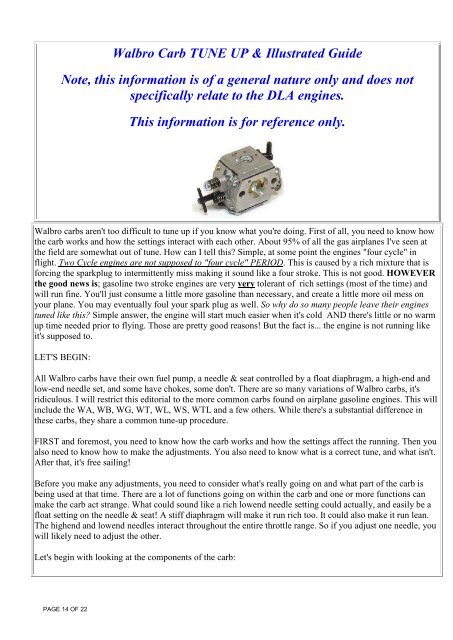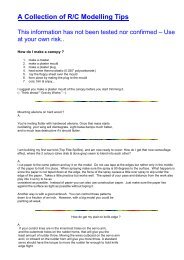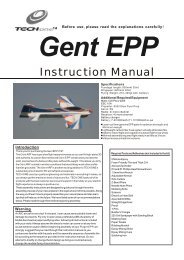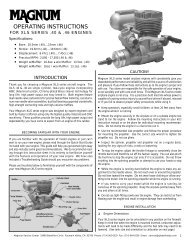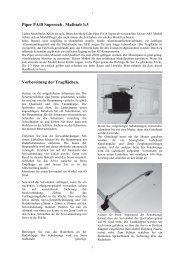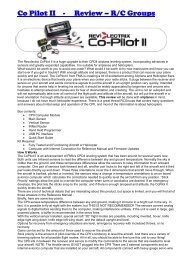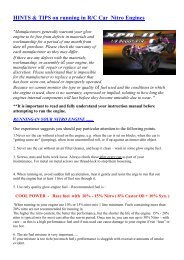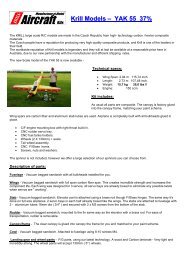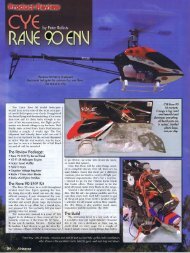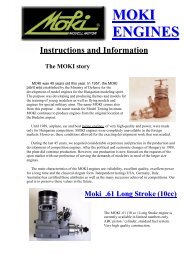Create successful ePaper yourself
Turn your PDF publications into a flip-book with our unique Google optimized e-Paper software.
Walbro Carb TUNE UP & Illustrated GuideNote, this information is of a general nature only and does notspecifically relate to the DLA engines.This information is for reference only.Walbro carbs aren't too difficult to tune up if you know what you're doing. First of all, you need to know howthe carb works and how the settings interact with each other. About 95% of all the gas airplanes I've seen atthe field are somewhat out of tune. How can I tell this? Simple, at some point the engines "four cycle" inflight. Two Cycle engines are not supposed to "four cycle" PERIOD. This is caused by a rich mixture that isforcing the sparkplug to intermittently miss making it sound like a four stroke. This is not good. HOWEVERthe good news is; gasoline two stroke engines are very very tolerant of rich settings (most of the time) andwill run fine. You'll just consume a little more gasoline than necessary, and create a little more oil mess onyour plane. You may eventually foul your spark plug as well. So why do so many people leave their enginestuned like this? Simple answer, the engine will start much easier when it's cold AND there's little or no warmup time needed prior to flying. Those are pretty good reasons! But the fact is... the engine is not running likeit's supposed to.LET'S BEGIN:All Walbro carbs have their own fuel pump, a needle & seat controlled by a float diaphragm, a high-end andlow-end needle set, and some have chokes, some don't. There are so many variations of Walbro carbs, it'sridiculous. I will restrict this editorial to the more common carbs found on airplane gasoline engines. This willinclude the WA, WB, WG, WT, WL, WS, WTL and a few others. While there's a substantial difference inthese carbs, they share a common tune-up procedure.FIRST and foremost, you need to know how the carb works and how the settings affect the running. Then youalso need to know how to make the adjustments. You also need to know what is a correct tune, and what isn't.After that, it's free sailing!Before you make any adjustments, you need to consider what's really going on and what part of the carb isbeing used at that time. There are a lot of functions going on within the carb and one or more functions canmake the carb act strange. What could sound like a rich lowend needle setting could actually, and easily be afloat setting on the needle & seat! A stiff diaphragm will make it run rich too. It could also make it run lean.The highend and lowend needles interact throughout the entire throttle range. So if you adjust one needle, youwill likely need to adjust the other.Let's begin with looking at the components of the carb:PAGE 14 OF 22


